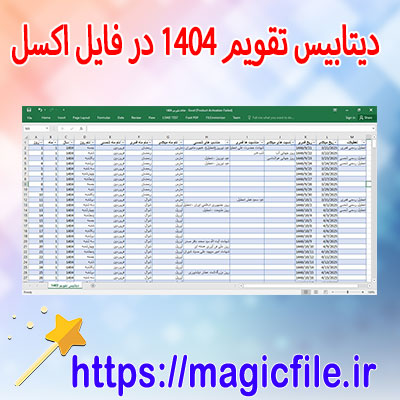DATA MINING: AN OVERVIEW
Data mining, a powerful technology, has revolutionized how we analyze and interpret vast amounts of information. Essentially, it involves extracting valuable patterns and insights from large datasets. But how does it work?
At its core, data mining employs various techniques, including statistical analysis, machine learning, and database systems. These methods help discover hidden relationships within the data. For instance, businesses can identify customer purchasing behaviors, which can lead to more effective marketing strategies.
KEY TECHNIQUES IN DATA MINING
Several crucial techniques are widely used in data mining.
- Classification: This technique assigns items in a dataset to target categories or classes. For example, spam detection in emails is a common use case.
- Clustering: This groups a set of objects in such a way that objects in the same group are more similar than those in other groups. Think of it as sorting customers based on purchasing habits.
- Association Rule Learning: This technique uncovers interesting relationships between variables in large databases. A classic example is market basket analysis, which reveals products frequently bought together.
- Regression Analysis: This predicts a continuous outcome variable based on one or more predictor variables. It’s often used in financial forecasting.
APPLICATIONS OF DATA MINING
The applications of data mining are vast and varied.
In healthcare, for instance, it helps in predicting disease outbreaks by analyzing patient data. In finance, it aids in detecting fraudulent transactions by identifying unusual patterns. Furthermore, in retail, companies use data mining to optimize inventory and improve customer service.
CHALLENGES IN DATA MINING
Despite its advantages, data mining faces several challenges.
Data quality is a significant concern. Inaccurate or incomplete data can lead to misleading results. Additionally, privacy issues arise, as sensitive information may be at risk during the process. Therefore, data mining must be conducted responsibly.
CONCLUSION
In conclusion, data mining is an essential tool in today’s data-driven world. It uncovers valuable insights, driving better decision-making across various industries. However, it is crucial to address the challenges it presents to harness its full potential. By doing so, organizations can leverage data mining to gain a competitive edge and enhance their operational efficiency.
دادهکاوی: سوال و جوابهای کامل و جامع
مقدمه
در دنیای امروز، حجم عظیمی از دادهها هر لحظه تولید میشود. با پیشرفت فناوریهای اطلاعات، نیاز به استخراج اطلاعات مفید و کاربردی از این دادهها احساس میشود. در این راستا، دادهکاوی یا "Data Mining" به عنوان یکی از شاخههای مهم علم داده، نقش کلیدی ایفا میکند. اما، سوال این است: دادهکاوی چیست؟ و چه کاربردهایی دارد؟ در ادامه، به طور کامل و جامع به این سوالات پاسخ میدهیم.
دادهکاوی چیست؟
دادهکاوی فرآیندی است که در آن، دادههای بزرگ و پیچیده مورد تحلیل قرار میگیرند تا الگوها، روابط، روندها و اطلاعات پنهان کشف شوند. این فرآیند، شامل مجموعهای از تکنیکها و الگوریتمهای آماری، یادگیری ماشین، آمار و سیستمهای خبره است که به صورت هدفمند، دادهها را بررسی میکنند. هدف اصلی دادهکاوی، تبدیل دادههای خام به دانش قابل فهم و تصمیمگیری بهتر است.
مراحل انجام دادهکاوی
- جمعآوری دادهها: ابتدا، دادههای مورد نیاز از منابع مختلف جمعآوری میشوند که ممکن است شامل بانکهای اطلاعاتی، فایلها، اینترنت و دستگاههای سنجش باشد.
- پیشپردازش دادهها: در این مرحله، دادهها پاکسازی، حذف دادههای ناقص یا اشتباه، و نرمالسازی میشوند تا فرآیند تحلیل به صورت صحیح انجام شود.
- کاهش ابعاد و انتخاب ویژگیها: برای کاهش پیچیدگی و افزایش کارایی، ویژگیهای مهم و مؤثر انتخاب میشوند.
- تحلیل دادهها: با استفاده از الگوریتمهای مختلف، الگوها و روابط کشف میشود.
- تفسیر و ارزیابی نتایج: نتایج به دست آمده تفسیر و در صورت نیاز، اصلاح میگردد.
- گزارشنویسی و ارائه نتایج: در نهایت، یافتهها به صورت گزارش، نمودار یا داشبورد ارائه میشوند.
تکنیکهای دادهکاوی
- خوشهبندی (Clustering): گروهبندی دادهها بر اساس شباهتها، برای مثال، گروهبندی مشتریان بر اساس سلیقهها.
- طبقهبندی (Classification): تخصیص دادهها به کلاسهای مشخص، مانند تشخیص اسپم و غیر اسپم در ایمیلها.
- رگرسیون (Regression): پیشبینی مقادیر عددی، مانند پیشبینی فروش در آینده.
- قواعد انجمنی (Association Rules): کشف روابط بین آیتمها، مثلا مشتریانی که نان و پنیر را با هم میخرند.
- تحلیل سلسله مراتبی (Hierarchical Analysis): بررسی ساختارهای درختی و سلسلهمراتبی در دادهها.
کاربردهای دادهکاوی
- بازاریابی و مدیریت مشتریان: تحلیل رفتار مشتریان، تعیین الگوهای خرید، و شخصیسازی پیشنهادات.
- پزشکی و علوم زیستی: تشخیص بیماریها، تحلیل ژنتیکی، و کشف داروهای جدید.
- مالی و بانکی: ارزیابی ریسک، کشف تقلب، و تحلیل بازارهای مالی.
- صنعت تولید: پیشبینی خرابی ماشینآلات و بهبود فرآیندهای تولید.
- وب و فناوری اطلاعات: بهبود جستوجو، فیلتر کردن محتوا و تحلیل شبکههای اجتماعی.
چالشها و محدودیتها
در کنار مزایای زیاد، دادهکاوی با چالشهایی نیز روبهرو است؛ از جمله حفظ حریم خصوصی، کیفیت دادهها، و نیاز به تخصص بالا در تحلیل و تفسیر نتایج. علاوه بر این، حجم دادهها روز به روز افزایش مییابد، که نیازمند زیرساختهای قدرتمند است.
نتیجهگیری
در مجموع، دادهکاوی یک ابزار حیاتی در عصر دادهها است که میتواند به سازمانها و افراد کمک کند تصمیمهای هوشمندانهتر و کارآمدتری بگیرند. با پیشرفت فناوریهای نوین، انتظار میرود کاربردهای این حوزه روز به روز گستردهتر و موثرتر شوند. بنابراین، شناخت بهتر از فرآیندها و تکنیکهای دادهکاوی، امری ضروری است برای بهرهبرداری بهینه از دادههای بیپایان امروز.
اگر سوال دیگری دارید، حتما بپرسید!





